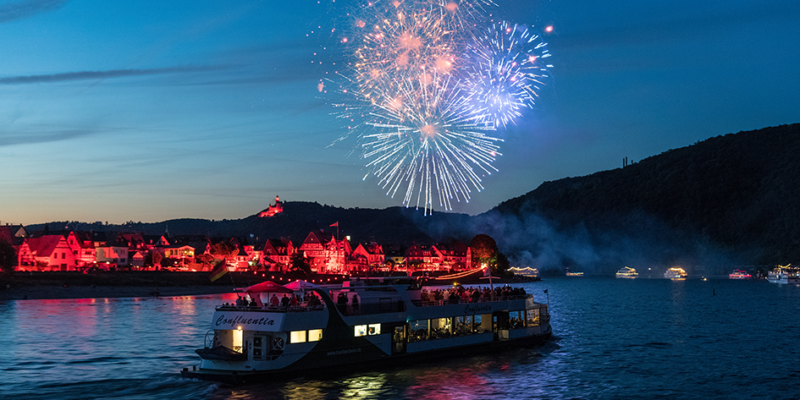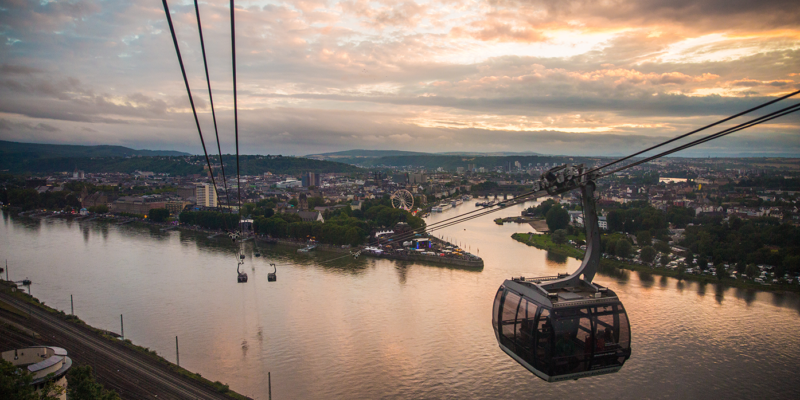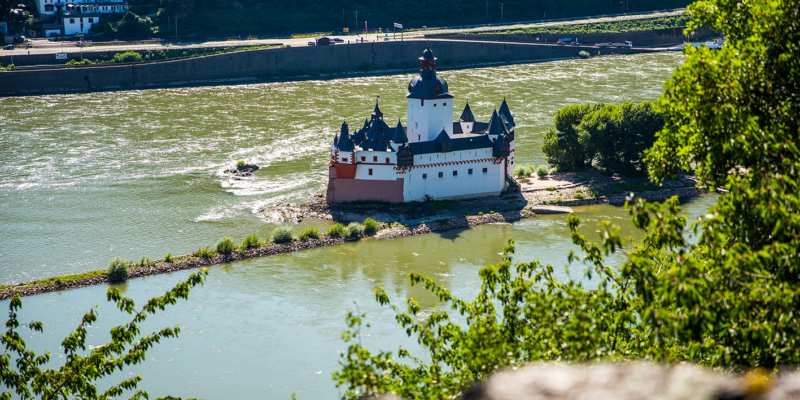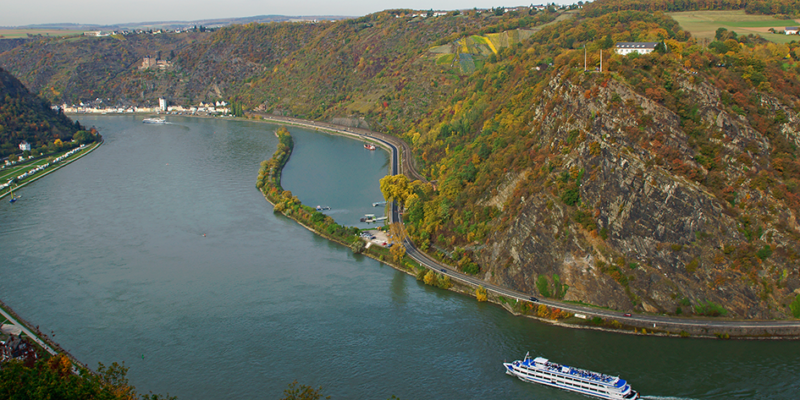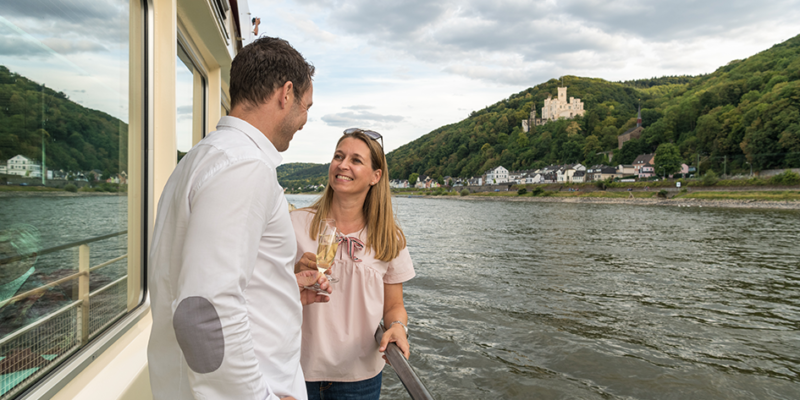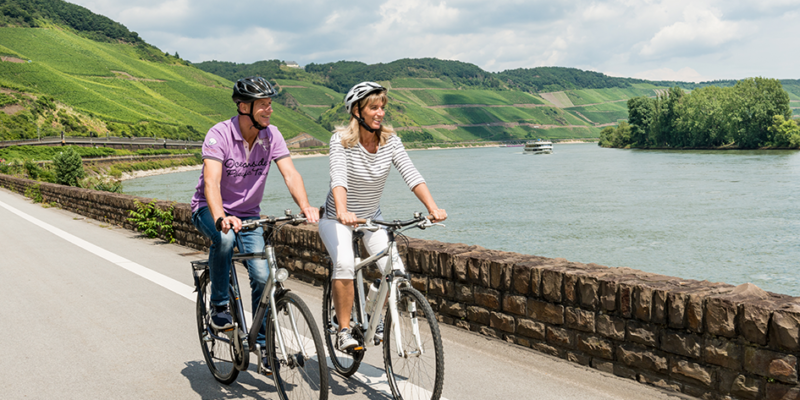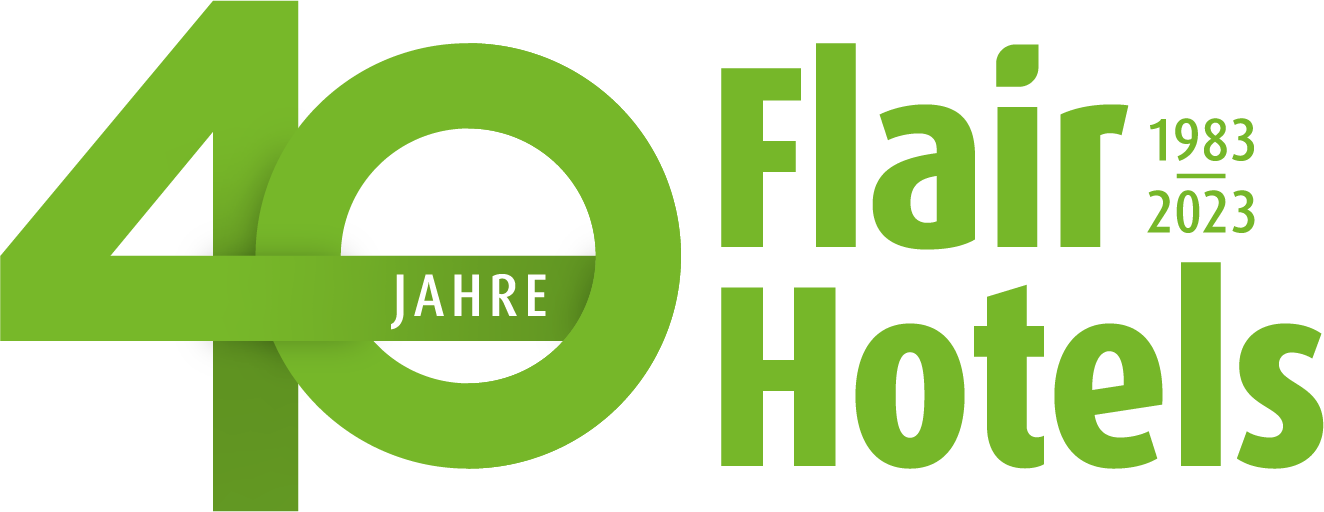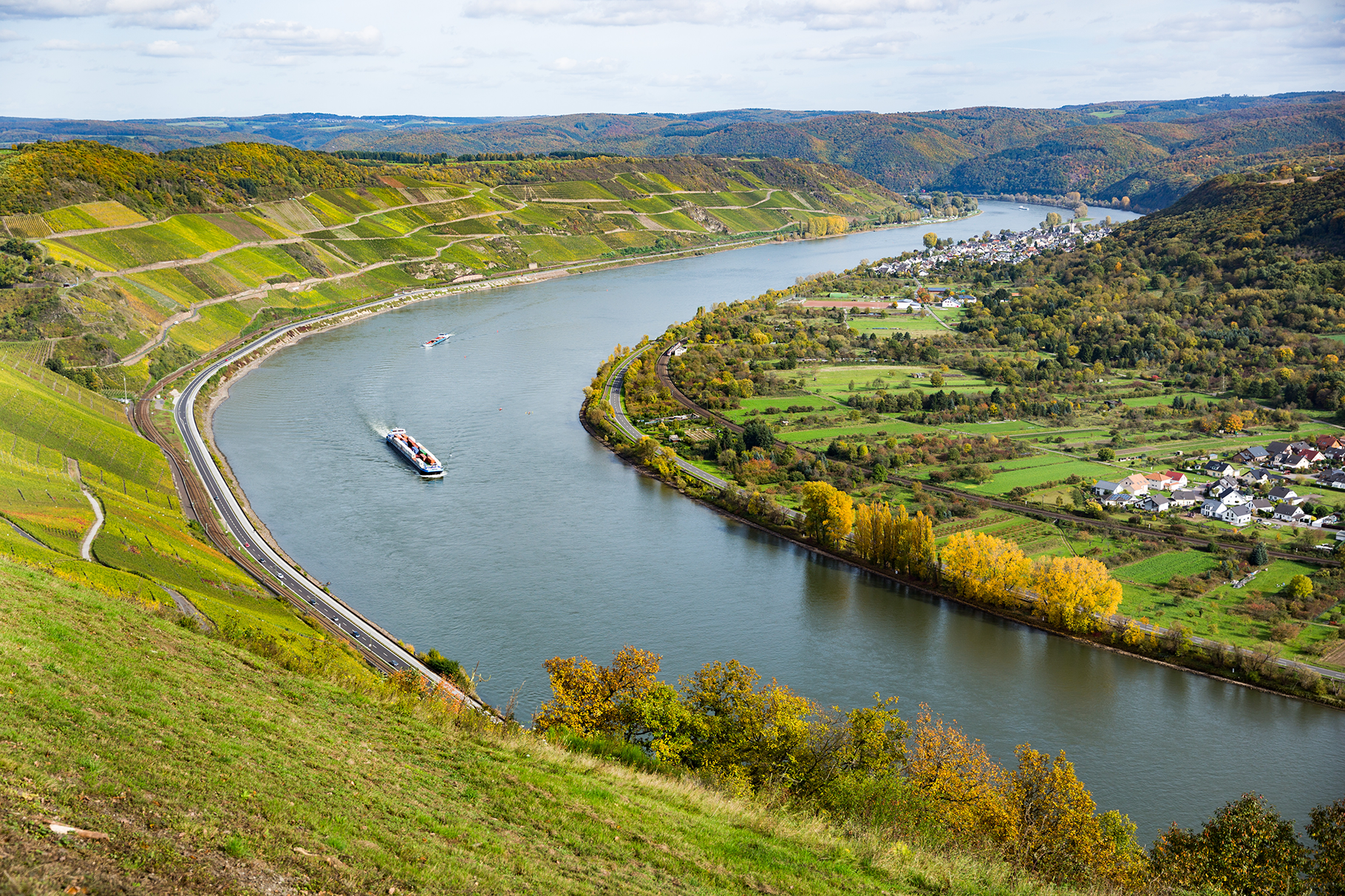
09 Apr World Heritage Upper Middle Rhine Valley
The World Heritage Upper Middle Rhine Valley looks back on over 2000 years of history and legendary stories. The area extends over around 65 kilometers from Bingen / Rüdesheim to Koblenz and has many highlights to offer.
Even the Romans recognized the beauty of the river landscape, which is now world-famous. Because in many places the traces of this time can still be seen. In 2002 the Upper Middle Rhine Valley World Heritage was added to the list of UNESCO World Heritage Sites. The landscape inspires visitors with an extraordinary variety of cultural and natural offers.
Contemporary witnesses such as the Marksburg near Braubach are stately enthroned on the heights with a view of the Rhine. It is the only hilltop castle on the Middle Rhine that has never been destroyed. In contrast, Pfalzgrafenstein Castle surprises with a very special sight: the former toll castle juts out of the Rhine like a stone ship. Therefore, even today it can only be reached by ferry. “I can also recommend Stolzenfels Castle between Spay and Koblenz,” says Andrea Rüdell from the Flair Hotel Alter Posthof in Spay (www.flairhotel.com/alter-posthof). The enchanted castle with a landscape park with grottos and waterfalls is almost the epitome of Rhine romanticism. “And you have a great view.”
Rhine romanticism in the Upper Middle Rhine Valley World Heritage Site
The romance of the Rhine has always been a magnet for many visitors to the Upper Middle Rhine Valley World Heritage Site. Because over 40 castles and ruins are enthroned above the Upper Middle Rhine Valley and illustrate the far-reaching history of the Rhine and its supraregional importance. These cultural monuments are surrounded by steep vineyards and rugged cliffs. The legend of the Loreley in particular contributes to the romantic view. Because according to the ballad, a mermaid named Loreley sat on the rock of the same name and lured the Rhine boatmen with her voice. Because of their beautiful singing, the boatmen ignored the dangerous current and the rocky reefs and crashed with their boats. Although the singing of the Loreley has fallen silent today, guests from near and far are still fascinated by the legend and the landscape of the Loreley. The Romanticum in Koblenz takes up the legend of the Loreley and the theme of Rhine romance. They are presented in an impressive interactive exhibition. Apropos Koblenz: The city where the Rhine and Moselle meet at the Deutsches Eck is worth a trip of its own. “From the Deutsches Eck you can take the cable car up to the Ehrenbreitenstein Fortress, for example,” suggests Andrea Rüdell.
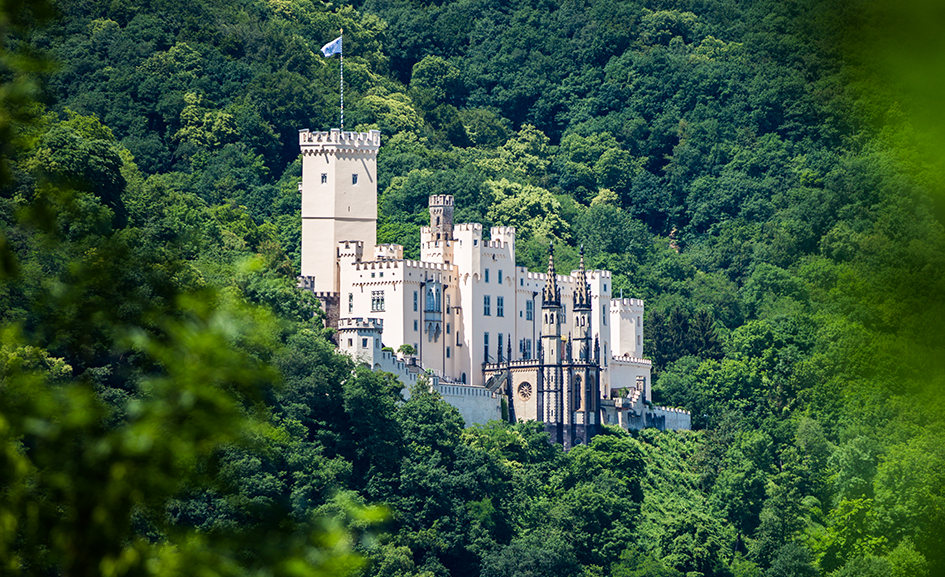
Historic towns with charm
The romance of the Rhine is not only characterized by the wonderful landscape, but also by small towns with charm. The city of Oberwesel welcomes visitors with two highlights: The former city wall is the best-preserved walk-in wall on the Middle Rhine. And the Schönburg, which was first mentioned in the middle of the 12th century, is now home to a castle hotel and a restaurant. A few kilometers further south, Bacharach is fascinating. Because historical alleys, secluded corners, art-historically significant church buildings and a largely intact city wall with battlements and towers can be found here. The excellent Bacharach wines are grown in the surrounding vineyards. Spay is one of the places in the Upper Middle Rhine Valley World Heritage site with the largest number of half-timbered houses. The imposing half-timbered buildings – some from the 17th and 18th centuries – nestle against the banks of the Rhine and are great photo opportunities. Some of the best wines on the Middle Rhine also come from Spay. “On the last Sunday in April we celebrate our wine spring from Spay to Boppard in the vineyards,” recommends Andrea Rüdell. During the five-kilometer hike, vintners and chefs offer regional dishes and wines at several stations along the way.
Viticulture plays a major role in the Upper Middle Rhine Valley World Heritage
In general, wine plays a major role on the Middle Rhine. Even if the growing area with around 440 hectares is one of the smaller growing areas in Germany, its wine is no less well known. By far the most important grape variety in the Middle Rhine region is the Riesling grape. About 70 percent of the vineyards are accounted for by Riesling, because it finds ideal growth conditions on the mineral slate soils and under the favorable climatic conditions of the Rhine Valley. What is special about the wine of the Middle Rhine are the locations: Over 80 percent of the wine is grown on steep slopes. This peculiarity means an increased amount of work for the winegrowers in the region, but on the other hand it also entails an excellent quality: the extreme slope in connection with the stony, rugged soil makes the juice of the grapes particularly interesting. Popular wine festivals are celebrated annually in most of the wine villages. These offer the perfect opportunity to test local wines in a typically cozy atmosphere.
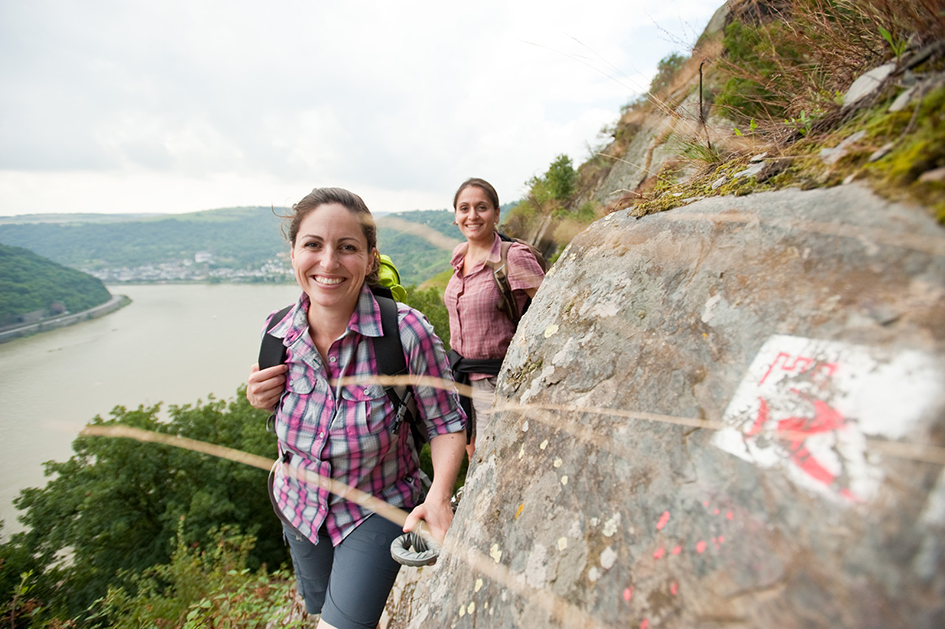
Hiking and cycling in the Upper Middle Rhine Valley World Heritage Site
The UNESCO World Heritage Upper Middle Rhine Valley can be explored in different ways. The Rhine Cycle Path runs along both sides of the Rhine and promises a new, unique view after every curve in the Rhine. Those who prefer to hike the Upper Middle Rhine Valley are spoiled for choice: the Rheinsteig leads on the right bank of the Rhine from Bonn to Wiesbaden and the RheinBurgenWeg on the left bank of the Rhine from Remagen to Bingen. Both long-distance hiking trails are excellent and offer every hiker breathtaking views of the Rhine Valley. The excellent connection to local transport makes it possible to hike only individual sections of the path. “You can also wonderfully hike our area here on the ‘dream paths’,” says Andrea Rüdell. You get a very special view from one of the numerous excursion boats that make it clear to visitors why the British were already enthusiastic about the landscape of the Romantic Rhine about 200 years ago.
One of the absolute event highlights is the Rhine in Flames. Castles and palaces are then brightly illuminated, Bengal fires bathe the valley in a very special light and an illuminated convoy of ships makes its way past top-class fireworks. The events are framed by varied supporting programs on land. Four of the five annual events take place in the World Heritage area: Bingen / Rüdesheim (first Saturday in July), Spay-Koblenz (second Saturday in August), Oberwesel (second Saturday in September) and in St.Goar / St. Goarshausen (third Saturday in September). Further information about the Upper Middle Rhine Valley: www.romantischer-rhein.de/welterbe-oberes-mittelrheintal.


